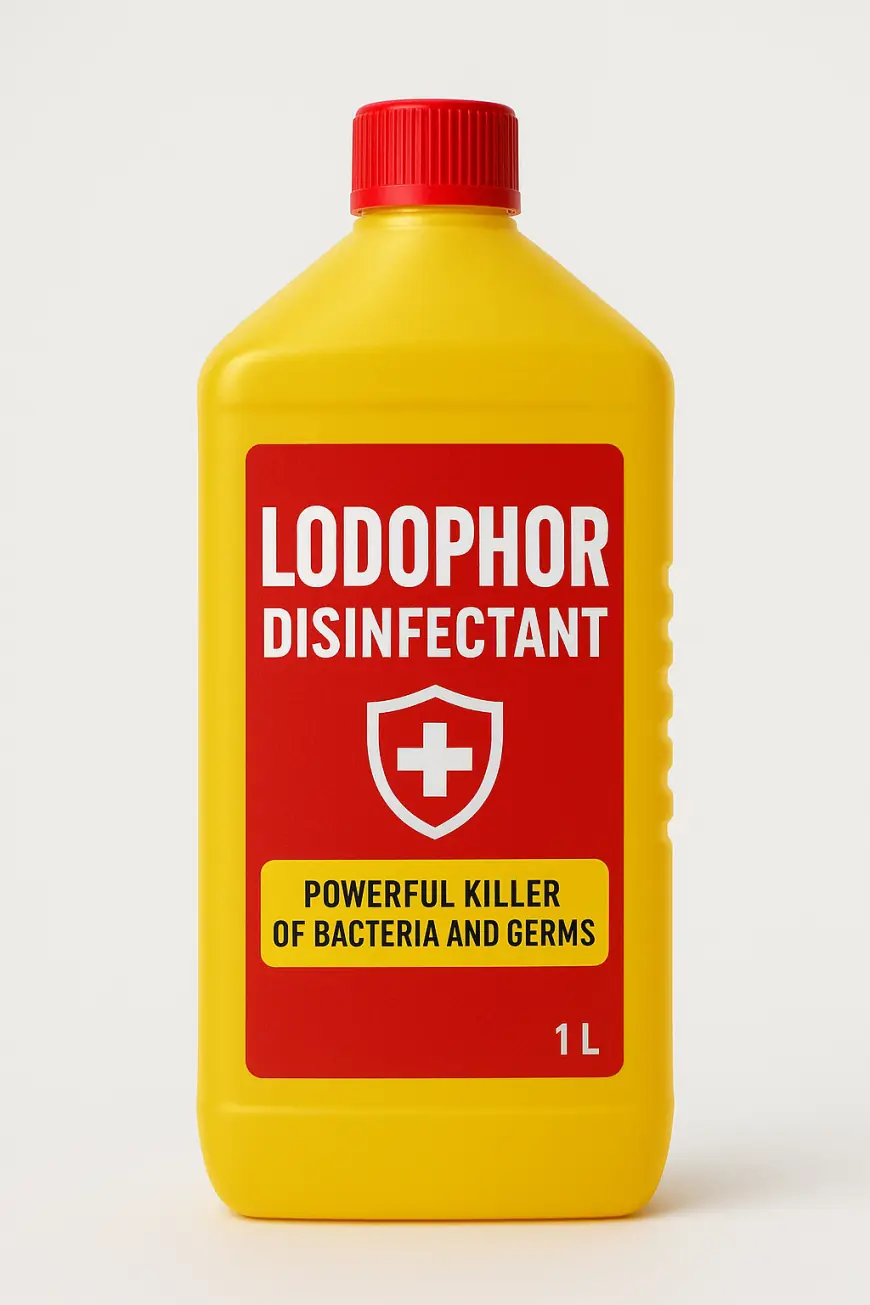Chlorine Dioxide Powder vs. Iodophor Disinfectant – An In-Depth Comparison
In the world of sanitization and disinfection, two names stand out for their efficiency and popularity – chlorine dioxide powder and iodophor disinfectant. Both are widely used across industries such as food processing, water treatment, agriculture, and healthcare.

In the world of sanitization and disinfection, two names stand out for their efficiency and popularity – chlorine dioxide powder and iodophor disinfectant. Both are widely used across industries such as food processing, water treatment, agriculture, and healthcare. While both aim to eliminate harmful pathogens, their properties, applications, and effectiveness differ. Let’s explore how these two disinfectants compare and which might be the ultimate choice for your needs.
Understanding the Role of Chlorine Dioxide Powder in Disinfection
Chlorine dioxide powder is a powerful oxidizing agent known for its exceptional germ-killing properties. It works by disrupting the cell walls of bacteria, viruses, and fungi, making it highly effective even at low concentrations. Unlike chlorine bleach, it does not form harmful by-products such as trihalomethanes, making it a safer option for water disinfection and food contact surfaces. It’s widely used in drinking water treatment plants, poultry farms, and food industries for sanitizing equipment.
Iodophor Disinfectant – Trusted for Broad-Spectrum Germ Control
Iodophor disinfectant combines iodine with a solubilizing agent, allowing controlled release of iodine for germ-killing action. It is particularly effective against bacteria, viruses, protozoa, and even some spores. Commonly used in hospitals, dairies, and food processing units, iodophors are gentle on surfaces yet effective in maintaining hygiene. Their distinctive brown color also acts as a visual indicator of coverage during sanitization.
Comparing the Mechanisms of Action for Maximum Effectiveness
The way chlorine dioxide powder and iodophor disinfectant work is quite different. Chlorine dioxide penetrates microbial cells and oxidizes vital cellular components, leading to rapid destruction. On the other hand, iodophors disrupt protein synthesis and metabolic pathways in microbes, ensuring complete inactivation. Both are fast-acting, but chlorine dioxide is often preferred where quick results in challenging environments are required.
Safety and Environmental Impact – Which Scores Better?
When it comes to safety, chlorine dioxide powder has an advantage because it produces fewer toxic residues compared to traditional chlorine-based disinfectants. It’s environmentally friendly and does not persist in water or soil. Iodophor disinfectant is also safe for use but may leave temporary stains on surfaces and skin due to iodine content. In terms of eco-friendliness, chlorine dioxide often takes the lead.
Cost-Effectiveness and Long-Term Use Considerations
Choosing between chlorine dioxide powder and iodophor disinfectant also depends on cost factors. Chlorine dioxide requires proper handling and activation before use but offers long-lasting microbial control, which can reduce frequent application costs. Iodophor disinfectants are relatively easier to prepare and store but may require more frequent application, especially in high-contamination areas.
Applications in Different Industries and Environments
Chlorine dioxide powder is widely used for water disinfection, cooling tower cleaning, and sanitizing large-scale food production facilities. It’s also effective in odor control and mold remediation. Iodophor disinfectant is commonly found in the dairy industry for cleaning milking equipment, in hospitals for surface sanitation, and in food service areas for utensil disinfection. The choice depends on specific industry needs and microbial threats.
Which Is More Suitable for Your Business?
If your priority is rapid action, broad-spectrum activity, and reduced chemical residues, chlorine dioxide powder could be the right choice. However, if you need a reliable disinfectant that is easy to use, visible during application, and effective for routine sanitation, iodophor disinfectant may be ideal. Many industries even use both in different stages of cleaning to achieve maximum hygiene standards.
Frequently Asked Questions (FAQ)
Q1: Can chlorine dioxide powder be used for drinking water treatment?
Yes, it is widely used for disinfecting drinking water and is safe when used at approved concentrations.
Q2: Does iodophor disinfectant leave any harmful residues?
No, it breaks down into iodine and other non-toxic components, but it may leave temporary color stains.
Q3: Which is faster in killing germs – chlorine dioxide or iodophor?
Chlorine dioxide generally acts faster, especially in high organic load environments.
Q4: Are these disinfectants safe for food-contact surfaces?
Yes, both can be used on food-contact surfaces when applied according to manufacturer guidelines.
Q5: Can I store chlorine dioxide powder for long periods?
Yes, the powder form has a good shelf life, but once activated, it should be used promptly.
Take the Next Step Towards Better Hygiene with Bisan Chemical and Engineer
At Bisan Chemical and Engineer, we specialize in providing high-quality chlorine dioxide powder and iodophor disinfectant tailored to your specific sanitation needs. Whether you run a food processing plant, a healthcare facility, or a water treatment operation, our products ensure maximum germ control, safety, and compliance with industry standards. Contact us today to find the right disinfectant solution for your business and achieve unmatched hygiene results.
What's Your Reaction?
 Like
0
Like
0
 Dislike
0
Dislike
0
 Love
0
Love
0
 Funny
0
Funny
0
 Angry
0
Angry
0
 Sad
0
Sad
0
 Wow
0
Wow
0
















































